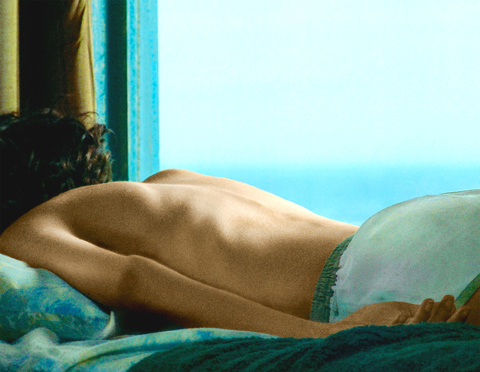How must the world appear to someone who has been treated as an exotic clinical specimen from birth? The moody, surreal XXY explores the world of Alex (Ines Efron), an intersex teenager — born with both male and female sex organs — navigating the treacherous emotional and hormonal rapids of uncertain gender.
The movie, directed by the Argentine filmmaker Lucia Puenzo and based on Sergio Bizzio’s short story Cinismo, is not a clinical case study, though months of research went into its creation. It is a somber, brooding study of Alex and her parents as they face the painful crossroads when adulthood looms. To help their child feel as normal as possible, Alex’s parents have fled Argentina to a remote seaside enclave in Uruguay, where her protective father, Kraken (Ricardo Darin), works as a marine biologist.
But even here, curious teenagers from the fishing village recognize that Alex is different and react with predictable cruelty. There is a near-rape scene in which several boys drag her into the dunes and pull off her pants to inspect her anatomy.

PHOTO COURTESY OF BEST
This overly schematic movie pointedly compares Alex to the marine life under Kraken’s scrutiny: sea turtles, a giant squid and especially clown fish, which exhibit behavior known as sequential hermaphroditism, when the male changes sex and becomes female.
Alex, with the aid of hormonal therapy, has been living as a girl. But with the onset of adolescence, her sexuality has begun to bloom, and for reasons she never explains and perhaps couldn’t put into words, she has recently stopped taking the drugs. Her deepest impulse is to be simply who s/he is.
Although she has developed breasts and has a girl’s voice, we eventually discover that she has a penis (unseen in the movie). Her masculinization may not yet be visible in facial hair and other signs, but her male aggression has already landed her in trouble. As the story begins, she has overreacted to the curiosity of a close male friend about her sexuality and has broken his nose.
Under increasing pressure from her parents to make a final decision about whether to live as a boy or a girl, she is furiously reluctant to choose. And Efron’s thrashing performance conveys Alex’s complicated mixture of ambivalence and defiance.
Visiting from Buenos Aires are a plastic surgeon, Ramiro (German Palacios); his wife, Erika (Carolina Peleritti); and their skinny, buck-toothed 16-year-old son, Alvaro (Martin Piroyansky). The rapidly intensifying relationship between Alex and Alvaro, who is sexually curious but not fully aware of his own gay tendencies, is the movie’s dramatic crux. Will they make love? If so, how? How will they feel afterward?
Their nervous flirtation culminates in a remarkable sex scene that is as confusing to the audience as it is to the characters, who enjoy it despite their anxiety afterward. That scene, and everything leading up to it, evoke a hyperaware sexual limbo in which you scrutinize the masculine and feminine components in the movie’s other characters and recognize the degree to which everyone has both.
If XXY is imagistically too programmatic (a scene of carrots being sliced is typical of its Freudian heavy-handedness) and devoid of humor, it never seems pruriently exploitative. It sustains an unsettling mood of ambiguity that lingers long after the final credits.

June 2 to June 8 Taiwan’s woodcutters believe that if they see even one speck of red in their cooked rice, no matter how small, an accident is going to happen. Peng Chin-tian (彭錦田) swears that this has proven to be true at every stop during his decades-long career in the logging industry. Along with mining, timber harvesting was once considered the most dangerous profession in Taiwan. Not only were mishaps common during all stages of processing, it was difficult to transport the injured to get medical treatment. Many died during the arduous journey. Peng recounts some of his accidents in

“Why does Taiwan identity decline?”a group of researchers lead by University of Nevada political scientist Austin Wang (王宏恩) asked in a recent paper. After all, it is not difficult to explain the rise in Taiwanese identity after the early 1990s. But no model predicted its decline during the 2016-2018 period, they say. After testing various alternative explanations, Wang et al argue that the fall-off in Taiwanese identity during that period is related to voter hedging based on the performance of the Democratic Progressive Party (DPP). Since the DPP is perceived as the guardian of Taiwan identity, when it performs well,

A short walk beneath the dense Amazon canopy, the forest abruptly opens up. Fallen logs are rotting, the trees grow sparser and the temperature rises in places sunlight hits the ground. This is what 24 years of severe drought looks like in the world’s largest rainforest. But this patch of degraded forest, about the size of a soccer field, is a scientific experiment. Launched in 2000 by Brazilian and British scientists, Esecaflor — short for “Forest Drought Study Project” in Portuguese — set out to simulate a future in which the changing climate could deplete the Amazon of rainfall. It is

The Taiwan People’s Party (TPP) on May 18 held a rally in Taichung to mark the anniversary of President William Lai’s (賴清德) inauguration on May 20. The title of the rally could be loosely translated to “May 18 recall fraudulent goods” (518退貨ㄌㄨㄚˋ!). Unlike in English, where the terms are the same, “recall” (退貨) in this context refers to product recalls due to damaged, defective or fraudulent merchandise, not the political recalls (罷免) currently dominating the headlines. I attended the rally to determine if the impression was correct that the TPP under party Chairman Huang Kuo-Chang (黃國昌) had little of a